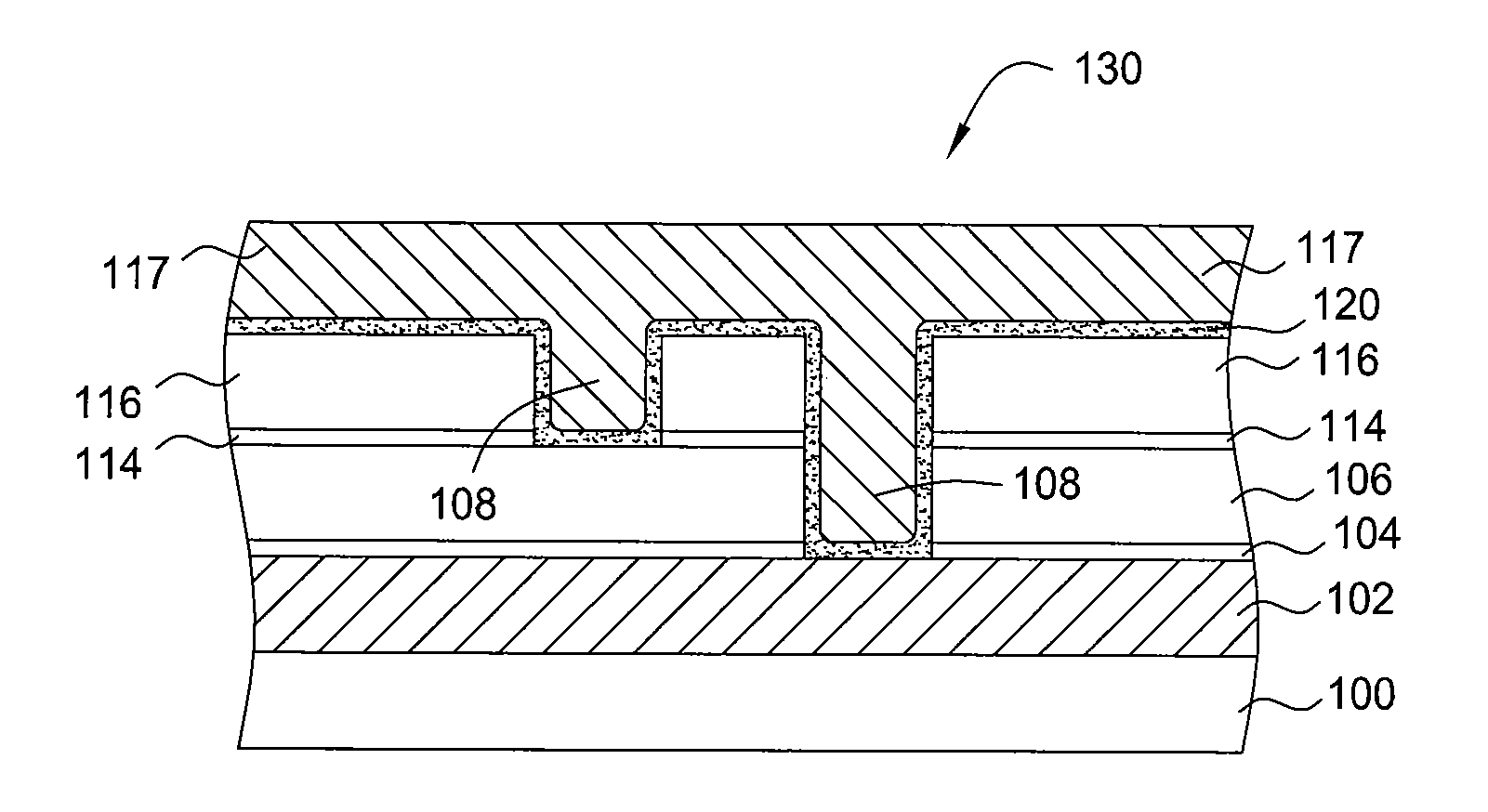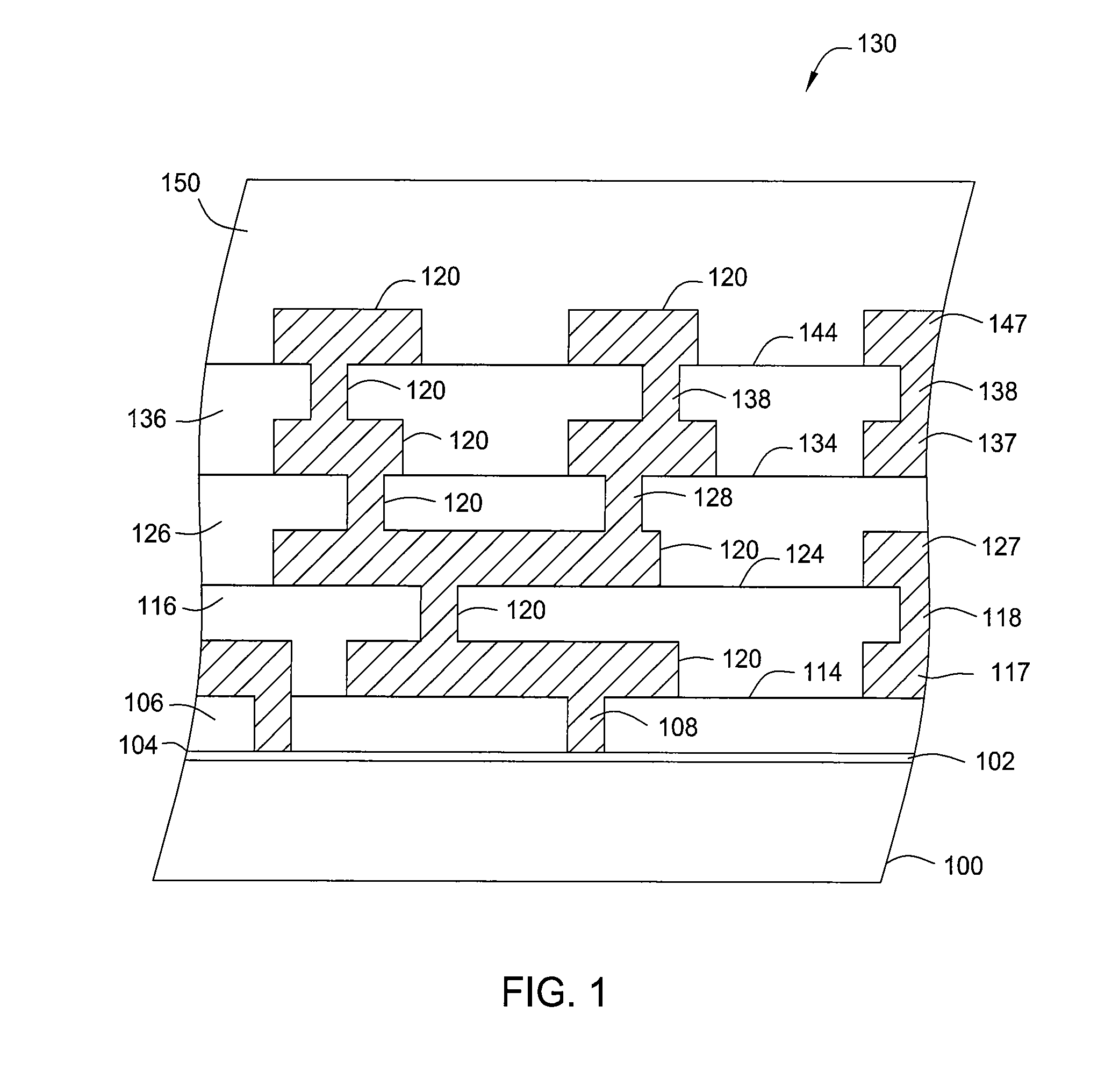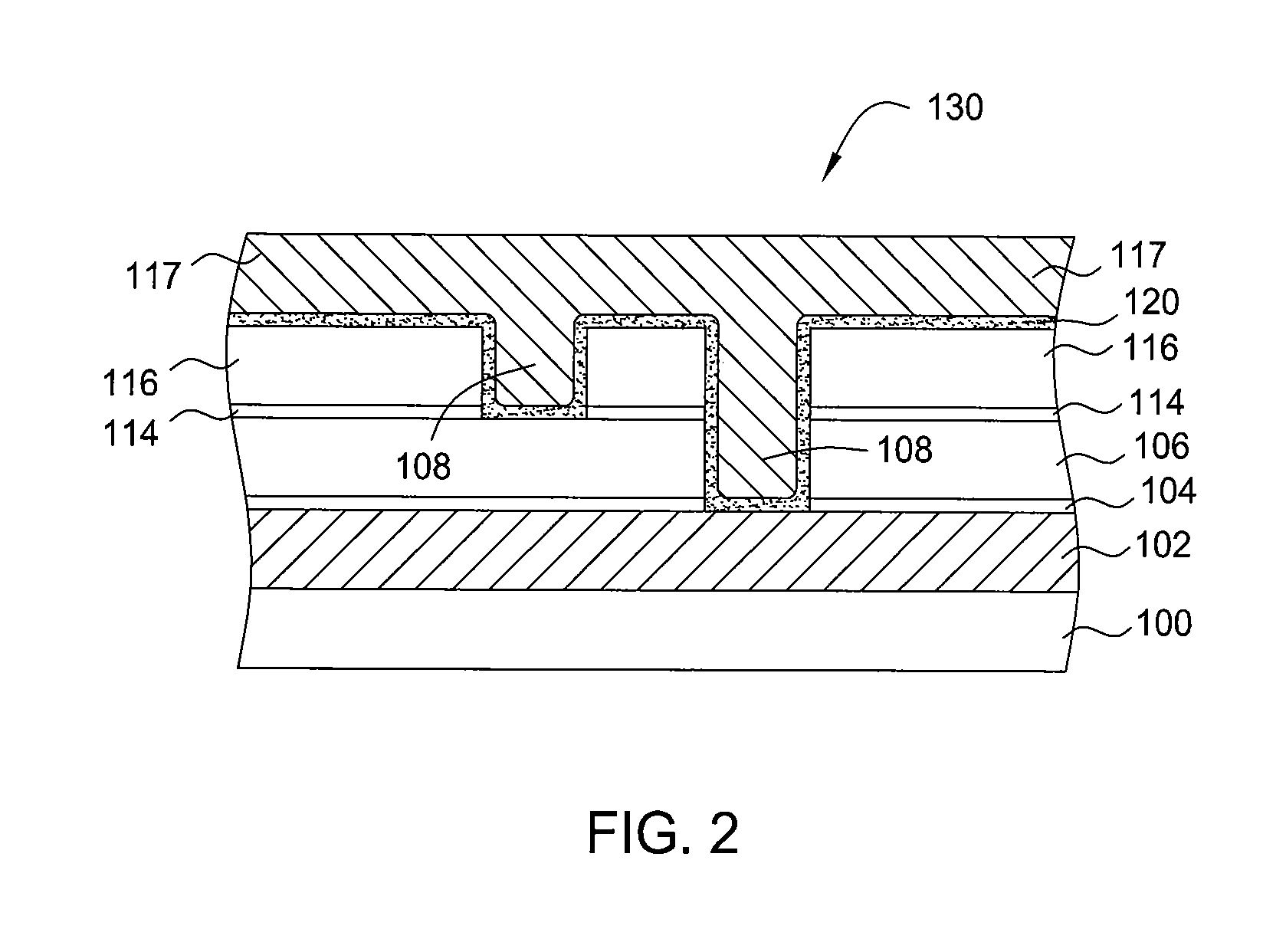Method for improving electromigration lifetime of copper interconnection by extended post anneal
a technology of interconnection and electromigration lifetime, which is applied in the direction of basic electric elements, semiconductor/solid-state device manufacturing, electric apparatus, etc., can solve the problems of thinning lines, voids, and potential open circuits, and achieve the effect of reducing the electromigration of copper
- Summary
- Abstract
- Description
- Claims
- Application Information
AI Technical Summary
Benefits of technology
Problems solved by technology
Method used
Image
Examples
example 1
[0045]In particular, microelectronic devices were formed according to the methods disclosed above. The copper interconnect structure was formed in an EnCoRe™ II processing chamber available from Applied Materials, Inc. using a barrier layer punch through process followed by a copper seed deposition process on a MTCG 65 nm e-test structure. Subsequently, the MTCG 65 nm e-test structures were subjected to an anneal at 250° C. for 168 to 336 hours.
[0046]The MTCG 65 nm e-test structures were subjected to an electromigration test by passing 1 milliAmp (mA) of current through the device in a 300° C. environment until device failure. The electromigration lifetime of the super annealed test structures (300 hours) was five times as long when compared to e-test structures not subjected to the super anneal (60 hours). Via resistances of the wafers appear to show that the longer electromigration lifetime is not due to a larger via size.
example 2
[0047]In another experiment, the copper interconnection was formed in an EnCoRe™ II processing chamber using a barrier layer punch through process followed by an RF copper deposition / etch / flash seed process on a MTCG 65 nm e-test structure. Subsequently, the MTCG e-test structures were subjected to an anneal at 250° C. for 168 to 336 hours. The MTCG 65 nm e-test structures were again subjected to an electromigration test by passing 1 mA of current through the device in a 300° C. environment until device failure. In this experiment, the electromigration lifetime of the super annealed test structures (600 hours) was still five times as long when compared to e-test structures not subjected to the super anneal (120 hours).
example 3
[0048]In another experiment, the copper interconnection was formed in an EnCoRe™ II processing chamber by an RF copper deposition / etch / flash seed process on a MTCG 65 nm e-test structure, but without the barrier layer punch through process. Subsequently, the MTCG e-test structures were subjected to an anneal at 250° C. for 168 to 336 hours. The MTCG 65 nm e-test structures were again subjected to an electromigration test with increased amperage by passing 1.5 mA of current through the device in a 300° C. environment until device failure. The electromigration lifetime of the super annealed test structures without the barrier layer punch through (180 hours) was three times as long when compared to e-test structures not subjected to the super anneal (60 hours).
[0049]The driving forces of electromigration can be described in two major categories: the electron wind force and stress gradient, such as back stress and interfacial / structural stress due to thermal expansion in confined dual-d...
PUM
| Property | Measurement | Unit |
|---|---|---|
| temperature | aaaaa | aaaaa |
| temperature | aaaaa | aaaaa |
| feature size | aaaaa | aaaaa |
Abstract
Description
Claims
Application Information
 Login to View More
Login to View More - R&D
- Intellectual Property
- Life Sciences
- Materials
- Tech Scout
- Unparalleled Data Quality
- Higher Quality Content
- 60% Fewer Hallucinations
Browse by: Latest US Patents, China's latest patents, Technical Efficacy Thesaurus, Application Domain, Technology Topic, Popular Technical Reports.
© 2025 PatSnap. All rights reserved.Legal|Privacy policy|Modern Slavery Act Transparency Statement|Sitemap|About US| Contact US: help@patsnap.com



